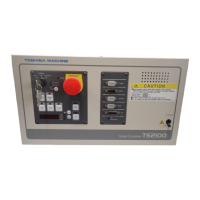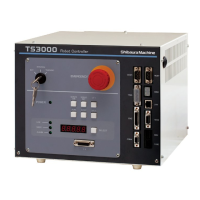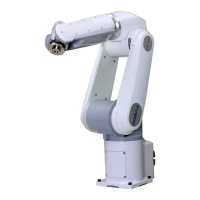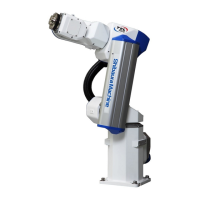STE 80722
– 22 –
4.2 Programming Examples for Communication with a Robot Language Program
It is possible to utilize communication functions in a robot language program in order to
do such things as specify program branches, correct the position of the robot to be
performed, etc. Listed below are several programming examples showing how to do
this.
4.2.1 Program Branching
The INPUT command can be utilized to specify the number of times a certain action
is to be repeated, to select a task for execution, etc.
Specifying the number of times an action is to be repeated (COM1)
PROGRAM REPEAT
N=0
START:
PRINT COM1, "REQ"
INPUT COM1, N
IF N == 0 THEN GOTO START
FOR K = 1 TO N
MOVE A1
MOVE A2
. . .
NEXT K
PRINT COM1, "END"
END
In this program, the robot will repeat a certain series
of motions as many times as the external device
tells it to.
First, the controller will send the character string
REQ to the external device. The external device
will reply by sending back the number of times the
operation is to be repeated.
The controller will read in this number as the
variable N, and will use this variable in the FOR
statement.
Should the program execution have been
suspended while the controller was waiting
receiving data in the INPUT command, the variable
N would be (mistakenly) taken as 0 when the
program is resumed. In such a case, branch is
executed to the top address of the program by
asking the external device for a retransmission.
When the task is completed, the controller will send
the character string END to the external device.
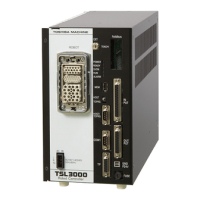
